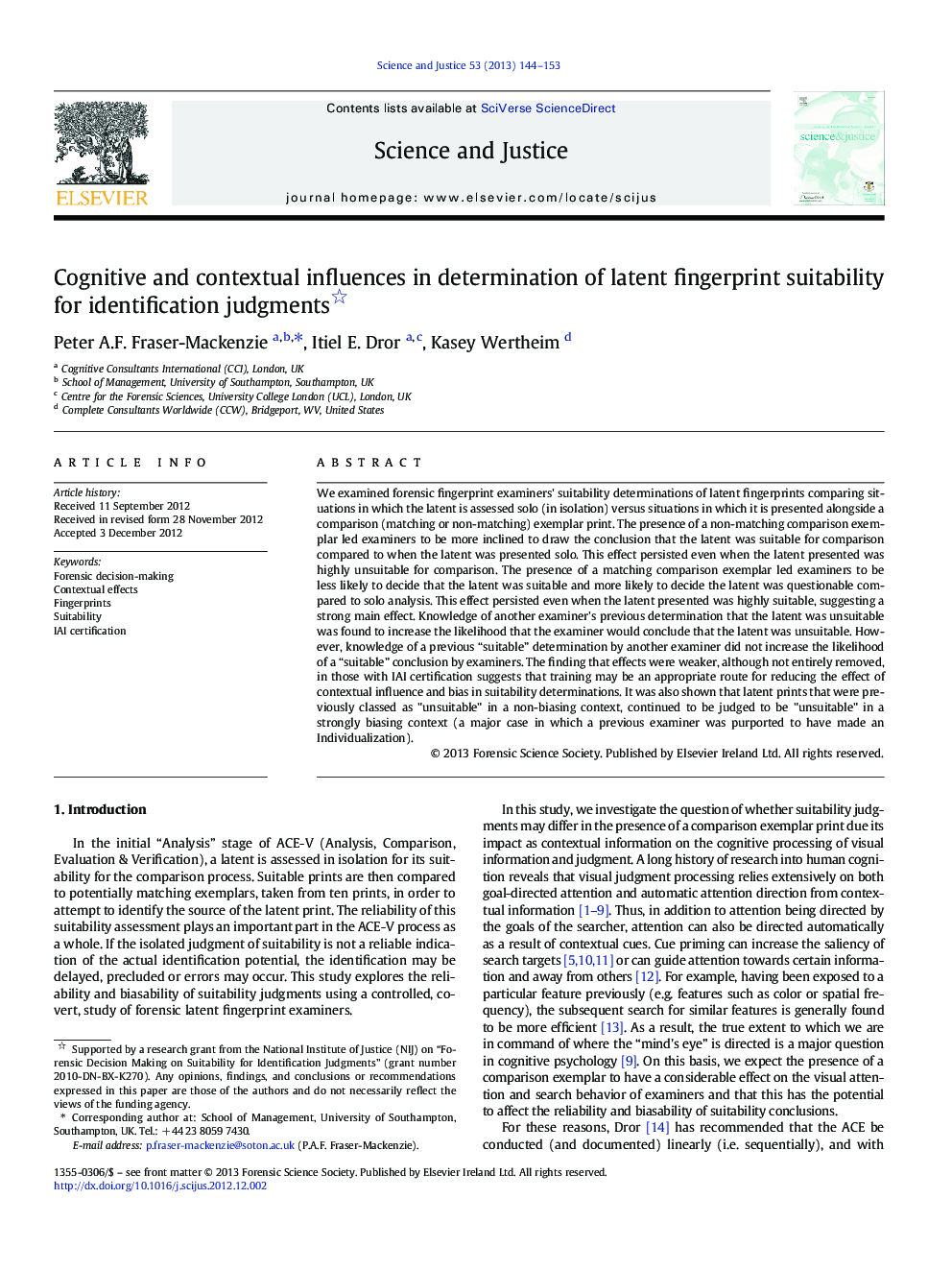| Article ID | Journal | Published Year | Pages | File Type |
|---|---|---|---|---|
| 106983 | Science & Justice | 2013 | 10 Pages |
We examined forensic fingerprint examiners' suitability determinations of latent fingerprints comparing situations in which the latent is assessed solo (in isolation) versus situations in which it is presented alongside a comparison (matching or non-matching) exemplar print. The presence of a non-matching comparison exemplar led examiners to be more inclined to draw the conclusion that the latent was suitable for comparison compared to when the latent was presented solo. This effect persisted even when the latent presented was highly unsuitable for comparison. The presence of a matching comparison exemplar led examiners to be less likely to decide that the latent was suitable and more likely to decide the latent was questionable compared to solo analysis. This effect persisted even when the latent presented was highly suitable, suggesting a strong main effect. Knowledge of another examiner's previous determination that the latent was unsuitable was found to increase the likelihood that the examiner would conclude that the latent was unsuitable. However, knowledge of a previous “suitable” determination by another examiner did not increase the likelihood of a “suitable” conclusion by examiners. The finding that effects were weaker, although not entirely removed, in those with IAI certification suggests that training may be an appropriate route for reducing the effect of contextual influence and bias in suitability determinations. It was also shown that latent prints that were previously classed as "unsuitable" in a non-biasing context, continued to be judged to be "unsuitable" in a strongly biasing context (a major case in which a previous examiner was purported to have made an Individualization).
